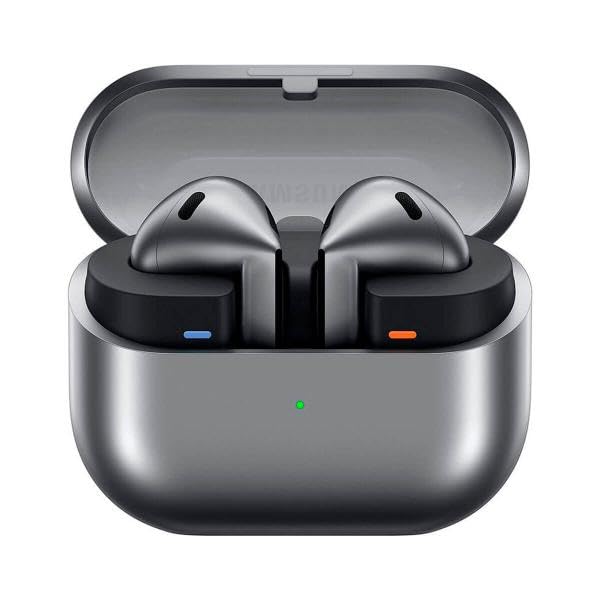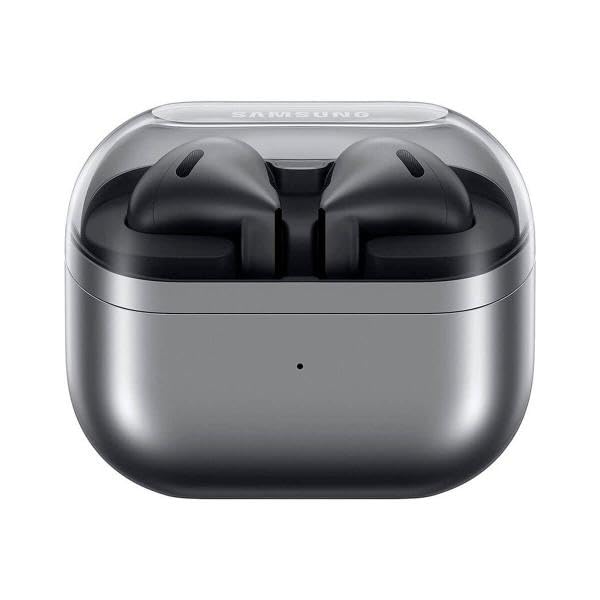Galaxy Buds3 Wireless Open Type Earbuds Review
We independently review everything we recommend. When you buy through our links, we may earn a commission which is paid directly to our Australia-based writers, editors, and support staff. Thank you for your support!

Welcome to the world of Galaxy AI integration in the all-new Galaxy Buds3. Finally, the promise of AI-driven audio technology is tangible, promising a unique listening experience for users. The sleek modern design aims to enhance the audio output, bringing sound closer to the ear. While the marketing touts an unparalleled Hi-Fi experience, it’s essential to approach this claim with a hint of skepticism.
The new open-design headphones boast of capturing sound intricately, offering a redesigned experience. However, the devil lies in the details, and the efficacy of this design remains to be verified.
One of the touted strengths is the promise of ULTRA-HIGH SOUND QUALITY with the Samsung Seamless codec. This technology claims to compress and encode audio with exceptional fidelity, promising to deliver even the subtlest nuances with clarity. While these are notable advantages, the actual user experience may vary.
Galaxy Buds3’s ANC feature intends to provide crystal-clear audio across various scenarios, from binge-watching a series to making calls on the go. Nevertheless, the effectiveness of active noise cancellation in real-world situations is always subject to individual preferences and environments.
Immerse yourself in tailored audio with the adaptive EQ and ANC functionalities, enhanced by Galaxy AI. The promise of personalized sound based on individual ear shapes sounds enticing, but the practical implementation remains to be seen. The optimization of the listening experience through AI-driven algorithms might be a game-changer if executed effectively.
While the box contents seem standard, comprising the Galaxy Buds3 headphones, charging case, USB-C cable, and a quick guide, the true value of the product lies in its performance and user satisfaction over time.
Key Technical Specifications
- ULTRA-HIGH SOUND QUALITY: SAMSUNG Seamless codec compresses and encodes up to 24bit/96kHz
- ANC: Adjust sound in the best way, wherever you go
- Adaptive EQ and Adaptive ANC: Assisted by Galaxy AI for optimized listening experience
Galaxy Buds3: Samsung’s Foray into AI-Powered Audio Evolution
The latest entrant in Samsung’s audio arsenal, the Galaxy Buds3, heralds the integration of AI into wireless earbuds like never before. While users can expect significant advantages in terms of sound quality and AI-driven features, there are areas where the Galaxy Buds3 might face stiff competition from industry stalwarts like Apple’s AirPods Pro and Sony’s WF-1000XM4.
Sound Quality and AI Capabilities
The Galaxy Buds3 promises a profound audio experience, thanks to a seamless codec capable of maintaining high fidelity even at high compression rates. This is a step ahead of many competitors, with the 24bit/96kHz encoding setting a benchmark for audio enthusiasts seeking clarity. However, while Samsung has touted its Galaxy AI features, the real-world efficacy of real-time translation and sound adjustments remains to be fully experienced by users. Competing models such as the AirPods Pro offer a reliable but less feature-rich experience with their Spatial Audio capabilities, and Sony provides formidable competition with its industry-leading noise cancellation.
Adaptive Sound Experience
The adaptive EQ and ANC capabilities in the Galaxy Buds3 promise a tailored listening experience. This is an area where these earbuds might excel by offering a unique blend of adaptive and proactive sound management through AI-enhanced algorithms. Comparatively, the AirPods Pro adapt actively but don’t provide the same level of personalized sound tuning, catering more towards users who prefer plug-and-play functionality. Sony, however, provides a comparable adaptive sound but lacks the AI-driven personalization Samsung promises.
Design and Ergonomics
Samsung has taken a bold step with a redesigned open-fit design aimed at delivering comfort while maintaining a rich soundstage. This may garner favor among those who have found traditional in-ear designs uncomfortable. However, the open-design approach might not offer the same passive noise isolation as in-ear models like the WF-1000XM4, potentially affecting sound immersion for some users.
The Galaxy Buds3, with its state-of-the-art AI augmentation and codec innovations, positions itself as a viable option for tech aficionados eager for the next advancement in earbud technology. Yet, for consumers prioritizing seamless integration with an ecosystem, Apple’s AirPods Pro and their superior ecosystem lock-in might seem more appealing. In contrast, Sony’s WF-1000XM4 with its class-leading noise cancellation will likely continue to allure audiophiles seeking solitude in sound.


